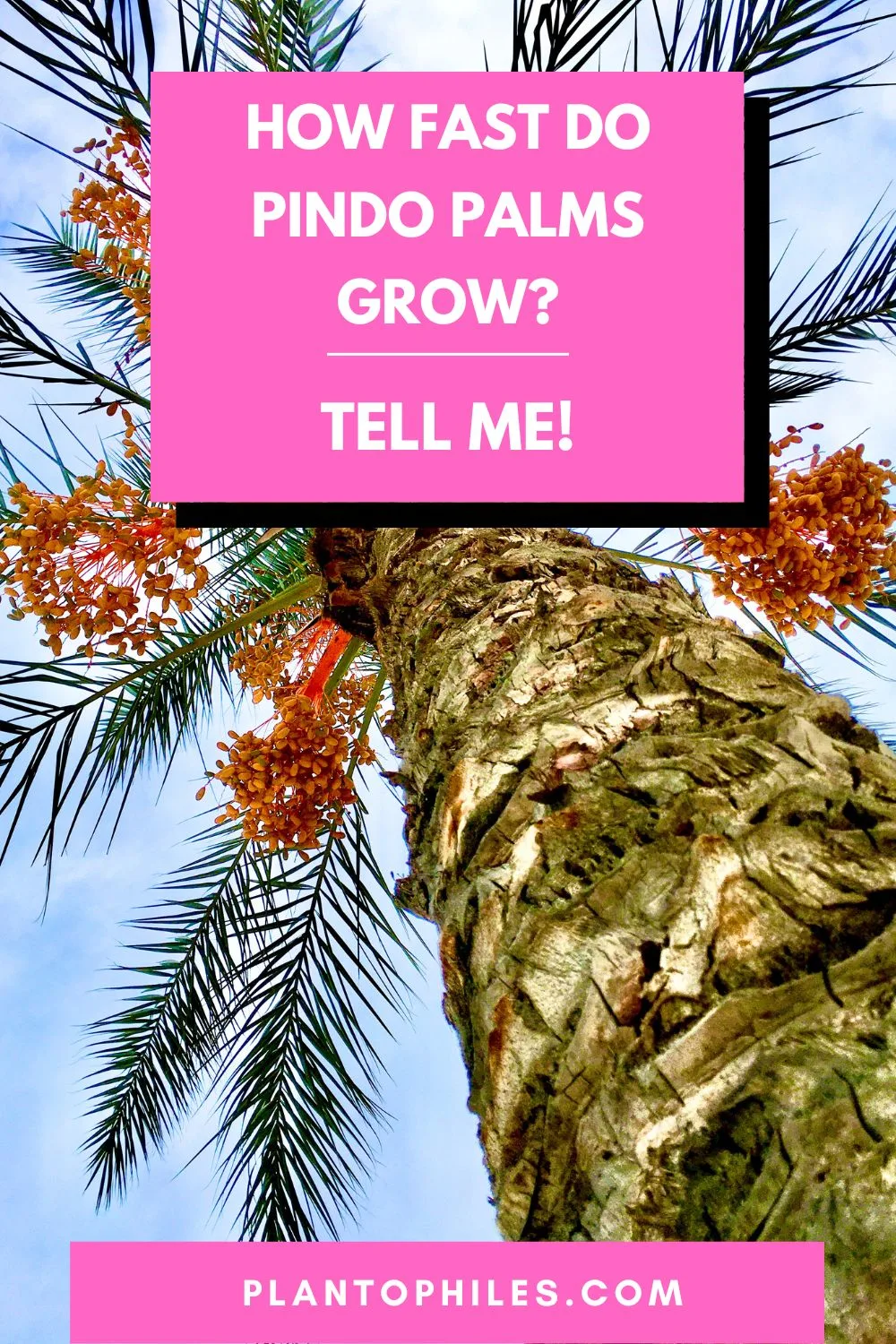Native to Brazil, the Pindo palm, also known as the Butia capitata or Jelly palm, is an evergreen perennial plant.
They are popular for their magnificent green fronds (leaves), and the tropical atmosphere they create when placed in a garden or used as landscaping.
Palm trees are known for their slow-growing qualities, but how fast do Pindo palms grow?
Read ahead to find out.
Table of Contents
How fast do Pindo palms grow?
Pindo palms grow between 12-24 inches (30-61 cm) annually. It can take between 5 to 10 years for them to reach maturity. Pindo palm fruits grow back yearly and take 3-4 months to ripen. Fertilization and adequate care can improve growing speed.
Pindo palm growth rate
Pindo palms are very slow-growing plants. It can take over five years for these Pindo Palms to reach maturity.
On average, a Pindo palm grows between 12-24 inches annually, which is not much compared to the average height of 10 to 15 feet that they are expected to reach.
However, although it is considered to be very slow-growing, it is actually one of the fastest-growing palms.
This makes it a popular choice for landscaping and gardens, as it can be placed under power lines without causing disruption.
Growth by location
The Pindo palm is one of the hardiest palms and can survive in temperatures as low as 15 degrees Fahrenheit.
This means that it is perfect for areas that get warm summers but often miss out on growing tropical plants and palms due to experiencing frostier winters.
Although they are very tolerant to the cold, Pindo palms will not grow in low temperatures.
For more growth, ensure that your Pindo palm is placed in an area where it receives as much sunlight as it can. If you’re still new to this plant-growing concept, then better read about the light levels these plants need so you’ll understand it.
This will provide the plant with more energy that could make it grow as much as 24 inches in a year.

When do Pindo palms produce fruit?
Pindo palms produce fruit yearly. The fruits are self-pollinating, which means that they grow virtually unattended.
The fruits grow a yellowish color, around the size of a large cherry or date.
They are completely edible to humans and often used in food and alcohol. Some even roast the fruits as a caffeine-free substitute for regular coffee that everyone knows.
The growth cycle of a Pindo palm fruit is between 3 to 4 months, but once they are ripe they need to be picked almost instantly.
This is especially prevalent if you have a tall Pindo palm, as the fruit has been known to drop within as little as a few days, which will create a sticky mess in your garden.
Most newer Pindo palm owners are unaware of the fruit that this plant produces due to it taking between 3 and 4 years for the palm to reach fruiting maturity.
However, once your Pindo palm has reached this level of growth, the fruits should come back every year.
How to promote growth in Pindo Palms
There are many ways to promote growth in a Pindo palm, which could result in your palm growing quicker than others.
Fertilization
Fertilization plays a key role in this, and it is suggested to use a specialized palm fertilizer.
However, you should fertilize your Pindo palm anyway, as vitamin deficiency is very common in palms.
Specialized palm fertilizer is very potassium heavy, and potassium is the nutrient that is needed to speed up the growing process and increase the production of fruit.
Fertilize generously three times a year, preferably during the early spring or summer and early fall.
This is when your Pindo palm should be receiving the most natural light, and when the fertilizer will be needed the most.
Do not fertilize your plant in the winter unless you live where the weather is still warm.
Fertilizing your Pindo palm when it isn’t going to be using the vitamins could cause it to become overloaded with nutrients, which may damage your Pindo palm.
Pruning
Removing brown and older fronds from your Pindo palm may impact its growth rate.
Leaves that have matured and are now dead or dying will still use precious nutrients from your palm’s soil.
Removing these leaves will promote growth in newer leaves.
Be sure to gently cut the leaves off with a sterile pruning tool and avoid pulling them from the palm.
Pulling leaves could result in damage to the surrounding leaves and to the fibers in the trunk of your Pindo palm.
Frequently Asked Questions about Pindo Palm Growth
Is Pindo palm fruit poisonous to pets?
Pindo palm fruit is not toxic for pets, but if your pet was to eat too many it could cause them to get an upset stomach.
Should you remove dead leaves from a Pindo palm?
Though it’s quite a drastic move, you should only remove a Pindo palm’s leaves once they are completely dead and dried out.
How often should a Pindo palm be watered?
Pindo palms should be watered when the topsoil becomes completely dry, and should then be watered until the roots and base of the palm are completely wet. How often this should be done is dependent entirely on how fast it takes for the soil to become dry.

Daniel has been a plant enthusiast for over 20 years. He owns hundreds of houseplants and prepares for the chili growing seasons yearly with great anticipation. His favorite plants are plant species in the Araceae family, such as Monstera, Philodendron, and Anthurium. He also loves gardening and is growing hot peppers, tomatoes, and many more vegetables.


